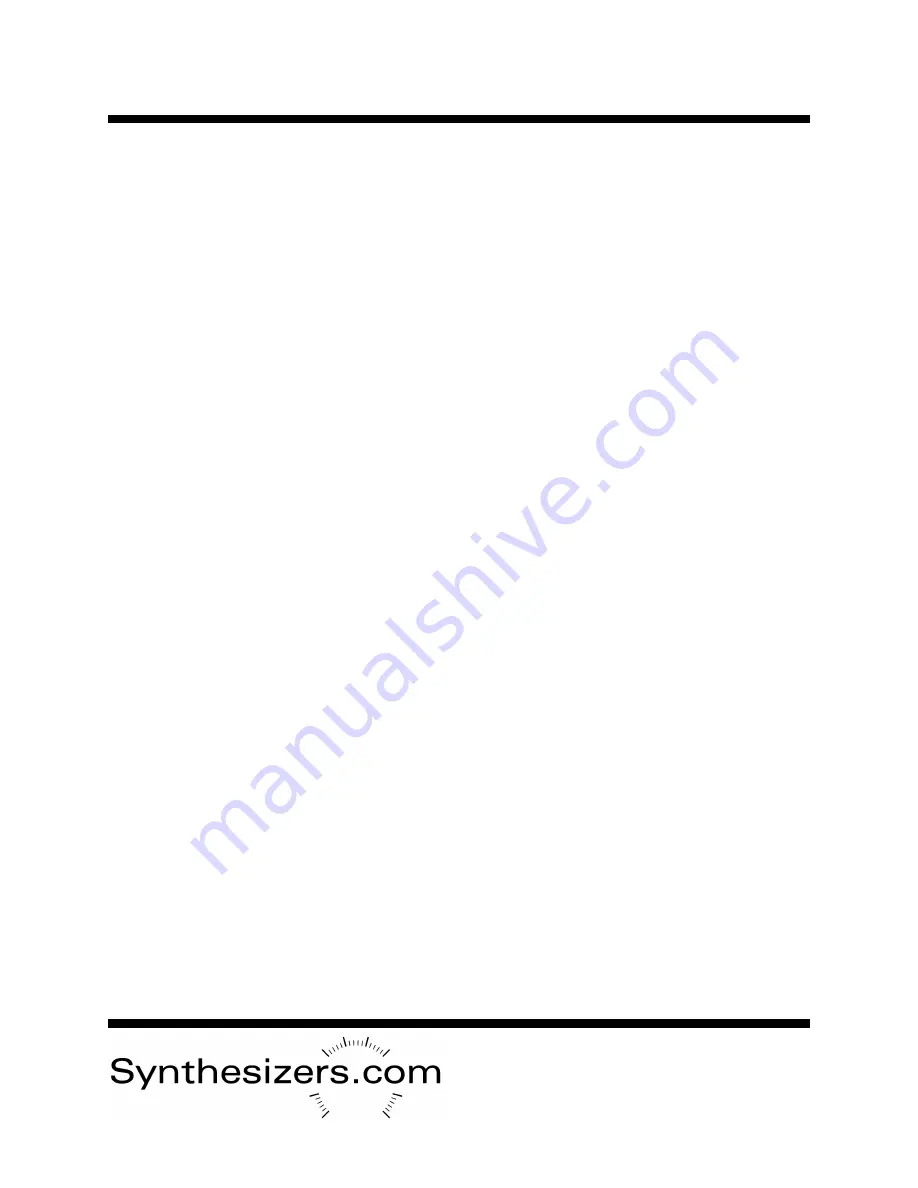
Q119
Sequential Controller
Aug 2014
Operation continued…
Continue or Reset Mode
The default power-up mode is 'Reset'. Whenever the sequencer is triggered with the 'Go' or 'Start' sig-
nals, the sequence will reset to stage 1 and start. There is a special, somewhat hidden mode called
'Continue' mode that can be toggled by holding the 'Set End' button and pressing the 'Manual Step' button
once. This causes the sequence to continue from where it had previously stopped whenever the 'Go' or
'Start' signals trigger a sequence.
Cycles and Sequences
Front panel switches control cycles and sequences. The sequencer can generate a single cycle upon trig-
gering, or a continuous series of cycles. The cycles can be up only (1,2,3...) or up/down (1,2,3...3,2,1).
Random Sequences
A special, somewhat hidden feature is Random stage mode. In this mode, the sequence will be random.
The 'Cycle' and 'Sequence' switches are not applicable in this mode. Other controls act the same. Ran-
dom mode is toggled by holding the 'Manual Step' button and pressing the 'Set End' button once.
Oscillator
An internal oscillator can provide control over the rate at which the sequencer moves through the stages.
The operator also has the ability to manually step through the stages which is helpful when setting the
stage controls. A switch is provided to select an external oscillator source which can be driven by the
Q106 Oscillator, keyboard gate pulses, etc. It is possible to have each stage active for a variable amount
of time by using an external Q106 Oscillator which is controlled by one of the bank outputs.
Length Selection
The number of stages in a sequence is set by a front panel push button labeled 'Set End'. Pressing this
button causes the LED for the last stage in the sequence to flash. Pressing again allows the user to cycle
through the stages. The last stage is set when the button is not pressed for 1 seconds.
Multiple Sequencers
Sequencers can be connected together to add functionality. This is accomplished by connecting the
'Done' output signal from one sequencer to the 'Start' input on another. Multiple sequencers can be set to
different speeds for unusual effects or driven by the same external oscillator. Outputs of all sequencers
can be mixed together or used separately.
Controls and Connectors
Mode Switch
Selects between 1 large bank of 24 stages, or 3 banks of 8 stages.
Outputs Switch
Selects the output voltage range –5/+5 volts to 0/+5 volts. Choose –5/+5 volts when controlling amplifiers
and filters which must sweep over large voltage ranges. Choose 0/+5 volts to have finer control over os-
cillators. Outputs can be routed through a Q125 Signal Processor and amplified or inverted if needed.

























